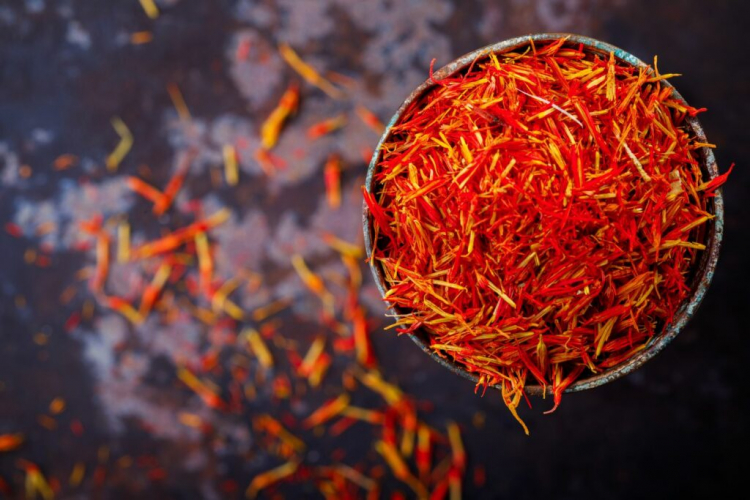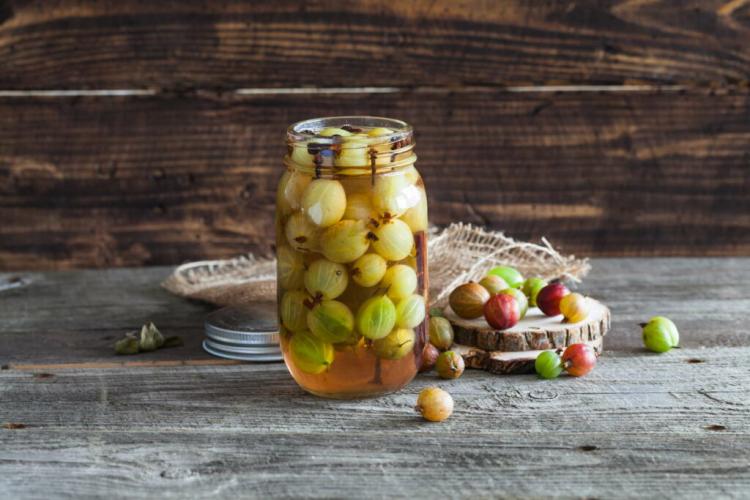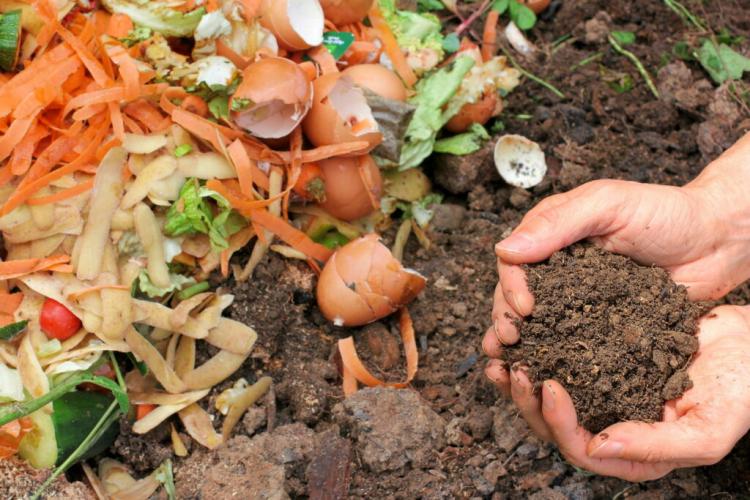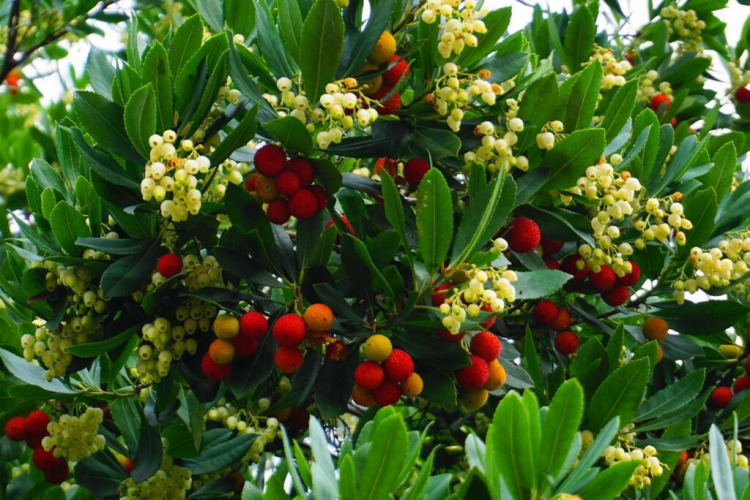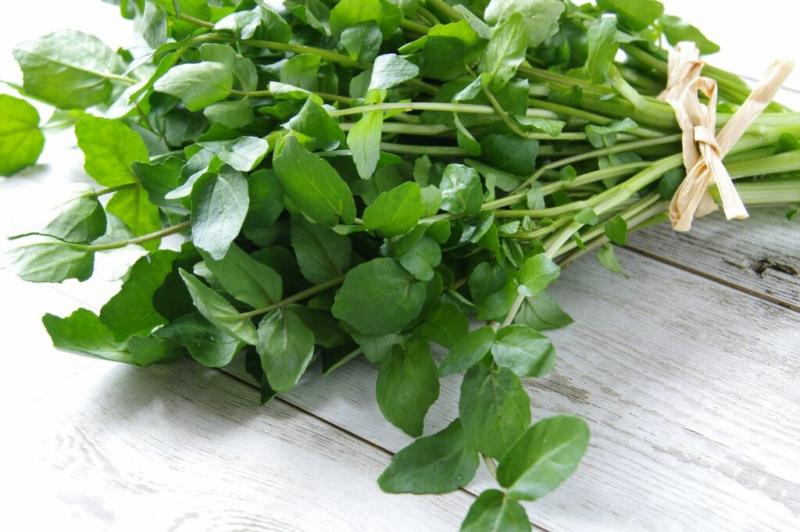Arbutus: The Best Species And Tips For Planting Strawberry Tree In The Garden
The fruits of the Arbutus already look very similar to the strawberries from the bed. We will introduce you to the best varieties from American and show you how to plant and care for Arbutus in the garden.
Well, are those strawberries on that tree? Even though the fruits of the Arbutus resemble red berries, the plant is not related to them. We’ll tell you what this strange tree is all about.
Arbutus: origin and characteristics
Table of Contents
The Arbutus, also known as a country berry, Hagapfel, or sea cherry, originally comes from regions like the Mediterranean, the Canary Islands, or North America. The plant has been fascinating people for a long time, as the mention in poems by Virgil and Ovid shows. In Central European gardens, however, this plant is now a real insider tip.
The Arbutus is characterized by quite slow growth, with a maximum height of about 5 to 40 meters in the open air – depending on the species. The leaves of the evergreen tree or shrub are reminiscent of those of the laurel tree.
From an age of about five years, the Arbutus is expected to bear fruit. Depending on the species, the plant blooms in winter or spring and shows its white to pink, panicle-forming bell flowers, typical of the heather family (Ericaceae), to which the tree belongs.
In spring, the red-orange strawberry-shaped berries that give the tree its name are formed, which can be harvested the following autumn. This makes the Arbutus an ideal eye-catcher in small and large gardens.
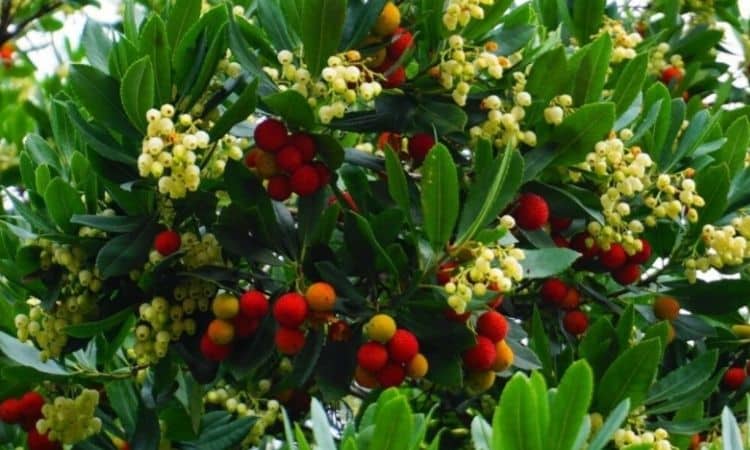
The Best Arbutus Varieties
The eleven different species of the Arbutus are divided into the old world and new world varieties according to their origin. Within the Old World species, the Arbutus unedo (Western Strawberry Tree), the Arbutus andrachne (Eastern Strawberry Tree), and the Canary Strawberry Tree (Arbutus canariensis) are the most important.
The American Strawberry Tree (Arbutus menziesii) is the best-known representative of the New World species. The Arbutus species differ optically mainly by their color and the shape of the flowers as well as the different growth height and winter hardiness.

Western
The western strawberry tree is especially widespread in the western Mediterranean area but is also found sporadically on the Atlantic coast as far as Ireland. While most fruit trees bloom in spring, the Arbutus is an autumn bloomer and thus a real eye-catcher in the autumnal garden.
Between October and December, the plant shows white to pink, panicle-forming bell blossoms. The tree is dependent on cross-pollination. To enable the blossoms to be fertilized, you must therefore either have an Arbutus in a neighboring garden or plant two of these unusual trees in your garden.
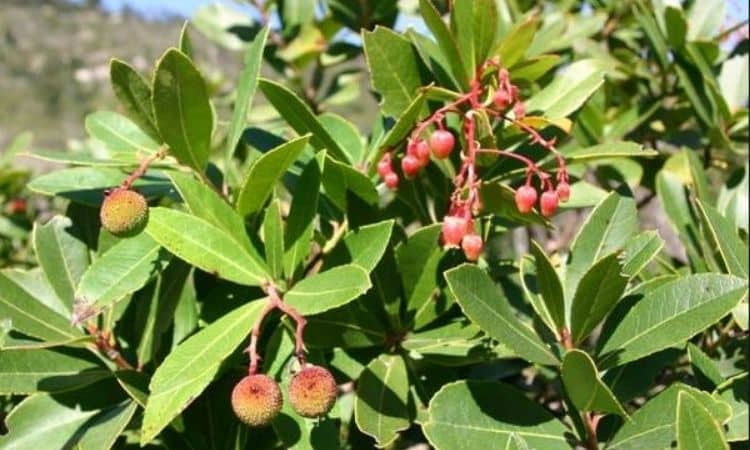
The two to three-centimeter large fruits ripen in the following year and can be harvested in autumn during the next flowering. The western strawberry tree reaches a growth height of three to five meters. Relatively little breeding work has been done on the varieties of the plant, which is why a few special specimens are waiting for us here:
- Arbutus unedo ‘Integerrima’: The special feature of this variety is a particularly shrubby growth with brilliant white flowers in late autumn.
- Arbutus unedo ‘Rubra’: This variety offers a special color play with pink to light purple flowers in autumn.
- Arbutus unedo ‘Compacta’: This variety is ideal for those who want a small tree as a pot plant. It is characterized by a particularly small growth with a maximum height of one to two meters.
Canary
The Canary Strawberry Tree is originally only found in the Canary Islands, where it reaches a height of up to 15 meters. The fragrant and, unlike the Western strawberry trees, self-pollinating flowers appear in February in a white to a reddish shade. The fruits are ripe from late autumn to winter and are two to three centimeters large.
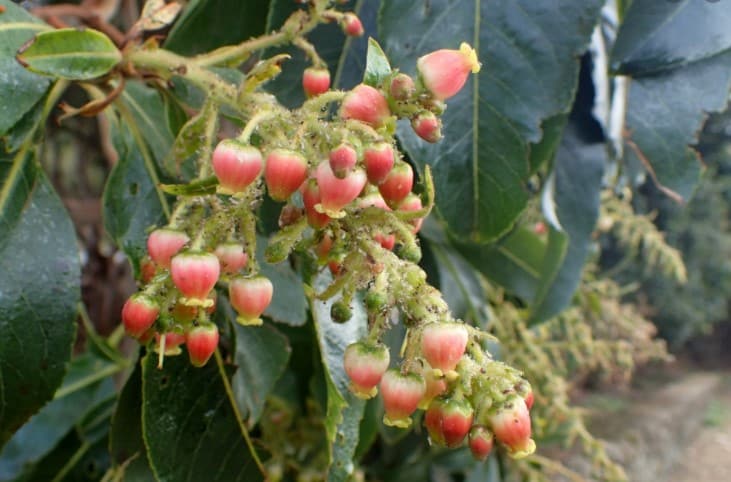
Eastern
In the eastern Mediterranean region, such as in Greece or southern Albania, the Eastern Strawberry Tree is native to the region. The tree reaches a maximum height of twelve meters and the mostly white blossoms appear from February onwards. In autumn the orange-red fruits, which are about one centimeter in size, can be eaten.
American
The natural range of the American strawberry tree stretches along the Pacific coast of North America. Due to the strong temperature fluctuations in this region, the plant can easily cope with temperatures between -20 °C and +45 °C.
With a height of up to 40 meters and a trunk diameter of up to 150 centimeters, the New World American Strawberry Tree is the largest representative of the Arbutus. In contrast to the Old World plant, the plant blooms between April and May and forms spike-shaped inflorescences over twelve centimeters in size with small hermaphroditic white flowers. The fruits are one centimeter in diameter but smaller than the fruits.
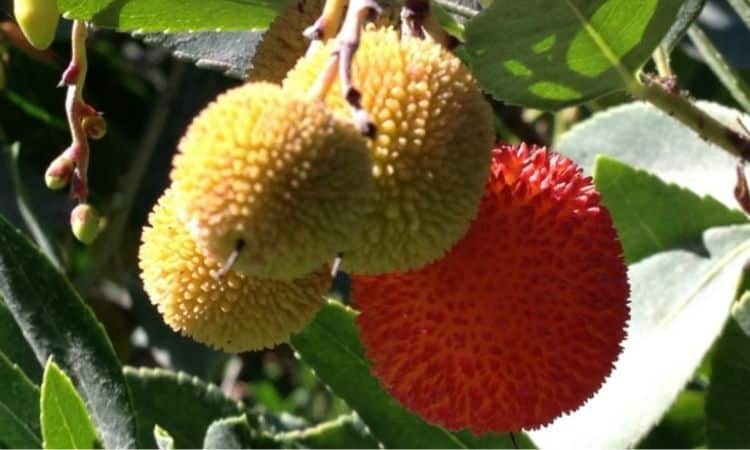
Planting the Arbutus: location, timing, and procedure
We recommend planting your The Arbutus in spring or autumn. Summer is less suitable because the tree is sensitive to drought after planting. Unfortunately, The Arbutus is not suitable for indoor plants but needs the sun in your garden or on your balcony. Varieties such as Arbutus unedo ‘Compacta’ can also be grown outside in a planter. To avoid waterlogging, it is advisable not to use a coaster when cultivating in a pot.
The right location for Arbutus
Most Arbutus is best kept outdoors. Since the tree is very drought-tolerant, it feels especially comfortable in a dry and sunny corner of your garden. In winter, the American Strawberry Tree tolerates temperatures of -15 to -20 °C, all other species absolutely need winter protection and can only be planted in sheltered locations. Young Arbutus should first be cultivated in pots and left to winter without frost until the tree is sufficiently hardy at the age of five years and can be planted out.
How to plant an Arbutus
To plant your Arbutus, dig a hole one and a half times the size of the bale. Especially for trees over one and a half meters high, we recommend a wooden post as support. The tree can be fixed to the wooden post with a tree tie made of coconut rope.
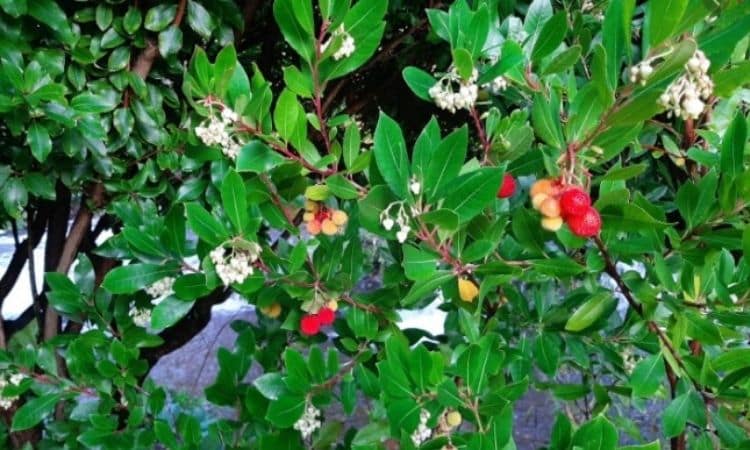
However, the post and tree must not lie against each other, otherwise, the bark will be damaged by chafing. After planting, water the tree abundantly, preferably with the help of a watering rim. Especially during the next three weeks, you should now ensure a good water supply.
The tree is best watered with collected rainwater. This is good for the environment and contains less lime compared to tap water, which is good for the Arbutus.
Cutting the Arbutus
In young Arbutus, the shoot tips can be shortened somewhat in spring to promote denser growth. Sharp garden shears should be used to avoid crushing the wood. A smooth cut surface provides less surface for fungi to attack and helps to keep the tree healthy. Older trees develop best without interfering with their growth. Heavy pruning into old wood should be avoided if possible. Old wood should be removed from the crown and the branch cut back to green, i.e. still living tissue.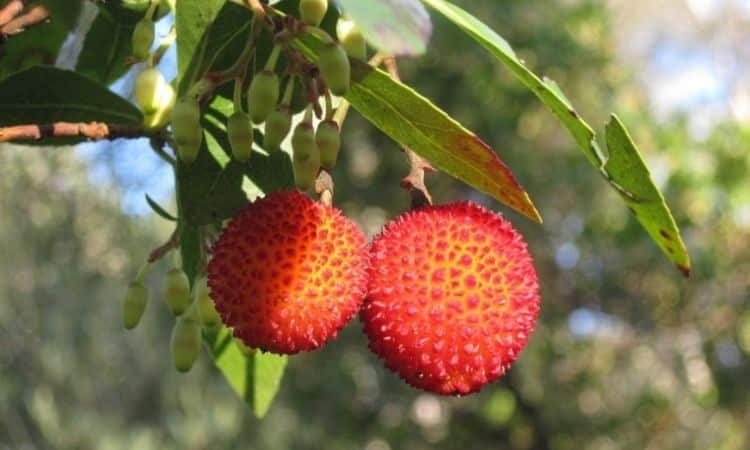
Propagate Arbutus
Both vegetative propagations via cuttings and a generative propagation of the Arbutus via the seeds in the fruits is possible. Propagation via seeds is a little more complex. The seeds swell for a few hours in water and are then stored in the refrigerator for two months, where they begin to germinate. Then the germinated seeds can be planted.
Cuttings of the Arbutus can be cut in autumn from woody but not too old shoots. The leaves of the cuttings, which are about ten centimeters long, are removed except for the top two and placed in soil. The cuttings are then covered with a transparent cover and placed in a light place at room temperature. New Arbutus then grows from the cuttings.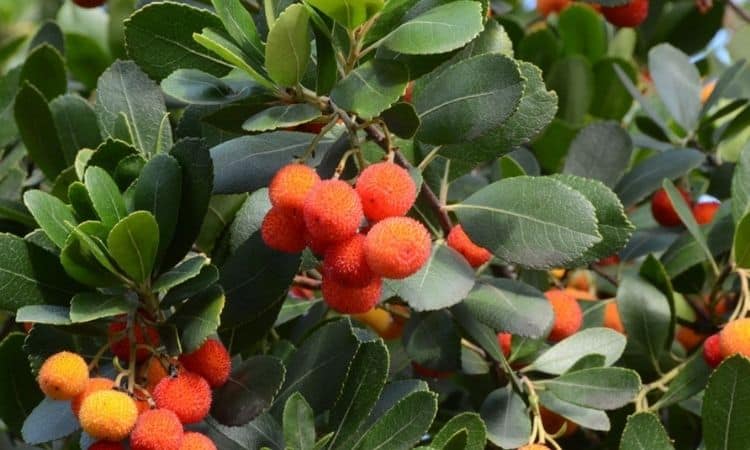
Are the fruits of the Arbutus poisonous or edible?
The fruits, which look like strawberries, can be harvested in autumn. The fruits of the Arbutus are edible, have a sweet-sour to sweet taste, and a slightly floury consistency.

